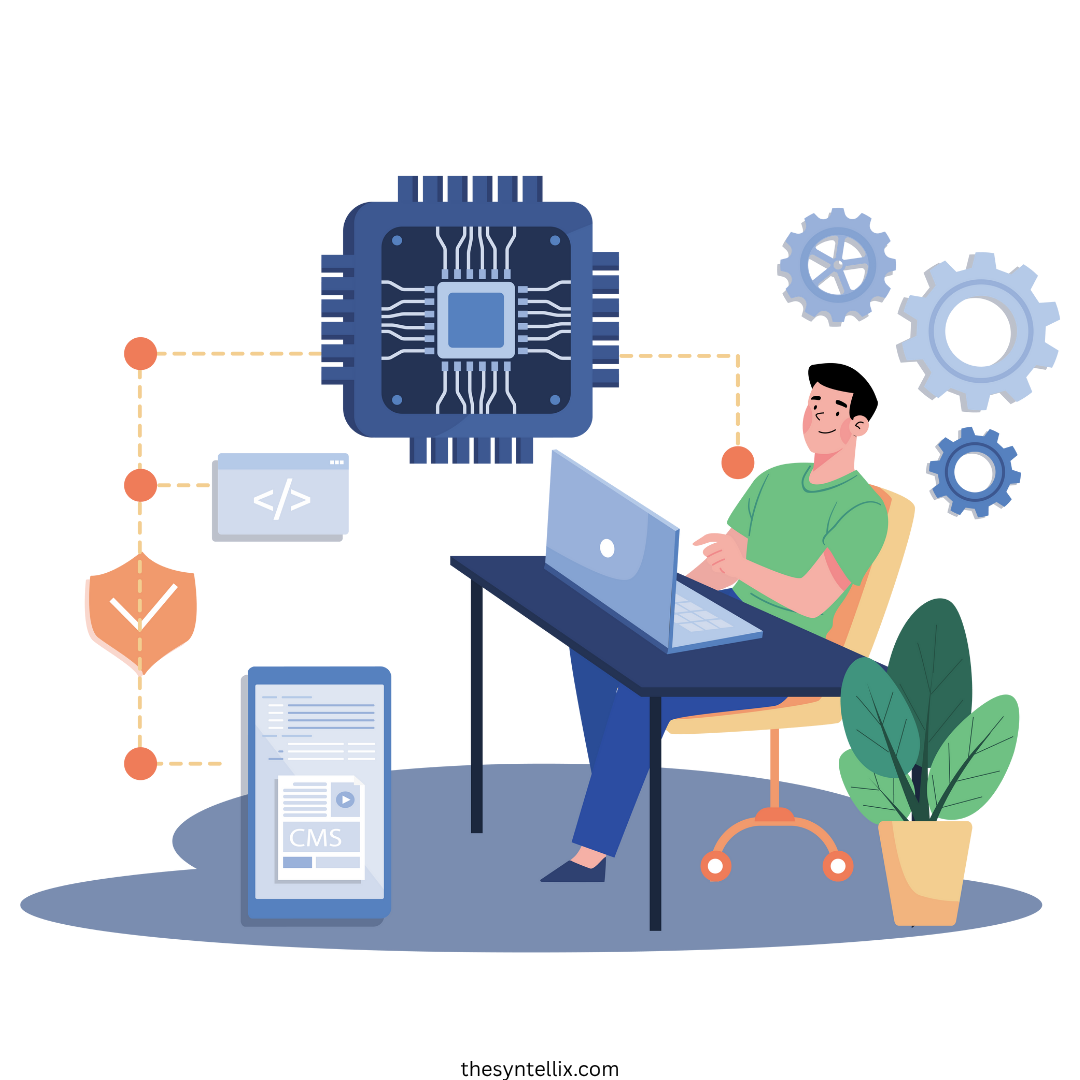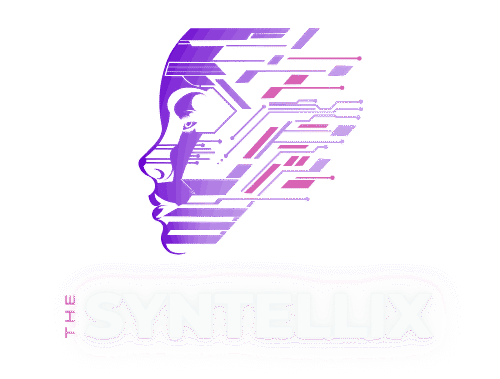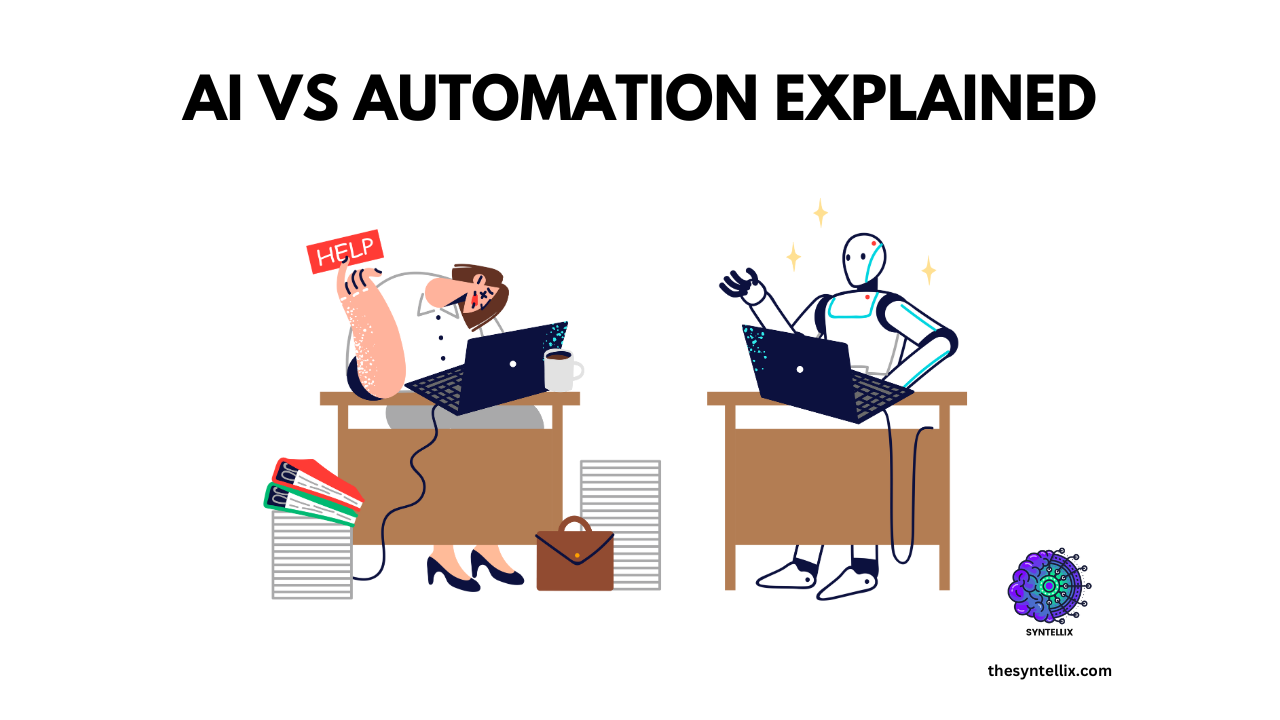Everyday we hear hundreds or thousands of buzzwords like “AI” and “Automation”, and we think that they are the same things. But there is a huge difference being a boing robot and being an AI chatbot. One follows strict rules and the other adapts. As the world is now converting to AI or tech-driven world so it is important to learn and understand AI vs Automation!. In this blogpost we will learn what are the major differences between AI and automation and how they both are dependent on each other. Let dive in!
What Is Artificial Intelligence(AI)?
Artificial intelligence(AI) is a field of computer science in which machines(computers or devices) are trained to think and perform human like tasks. AI systems can learn from experience, can find patterns in data and can train and enhance its capabilities with data.
In my perspective, Artificial Intelligence (AI) is not just about machines that can work like humans but it is about creating a new kind of intelligence that is built from data, not biology. Unlike the human brain, which is made up of emotions, culture, and life experiences, AI is trained by the information we give it such as numbers, text, images, and patterns.
AI will reflect the world we show it but this reflection is not always perfect or what we expect from it. Sometimes, it picks up on biases, gaps, or errors hidden in the data. That is why AI can not think like us, it only follows logic and patterns, not feelings or understanding.
What makes AI so powerful is also what makes it risky. It does not need sleep, does not feel emotions, and can process huge amounts of data faster than any human. It can find patterns we had miss and make choices in seconds. But it also does not understand context, fairness, or ethics—unless we program those into it.
AI is not a digital brain, it is a new kind of intelligence—artificial, fast, and unfamiliar. It is not here to replace human thinking but to challenge how we use it. As we build smarter systems, we must also build smarter ways to guide them.
Early AI programs can relies on hardcoded rules, but now with the methods like machine learning and deep learning AI can train itself using massive amount of data or information provided. AI can also use NLP(Natural language processing), AI can learn and understand human language for better understanding.
But keep that in mind, we are still far from ” General AI ” in which AI can think or take decisions exactly or even better than humans. If AI and automation works hand-in-hand accurately, it can improve the sectors like healthcare, education, and business—while raising important questions about privacy, ethics, and control.
What Is Automation?
Automation means training machines to perform tasks that humans usually do, but with accuracy and in less time. Humans sets the rules and robots follows them. Automated machines are used to perform repetitive tasks with exact accuracy every time because of high speed so that humans can do something productive.
Imagine you are training a helper to do your daily life chores—things like making coffee, sorting your emails, or double-checking reports or cooking meals on time. Once they have learned, they don’t need reminders, don’t get tired, and don’t make the same mistake twice. That is exactly what we call automation. It is not just machines doing work by their own, but systems quietly learning your rhythms and taking over the predictable parts of your life and business.
Automation is not a magic, though it can feel that way you are living. It is built on patterns: repeatable, logical steps that can be programmed into a machine, a script, or an app, allowing tasks to run in the background while humans move on to bigger challenges of daily life. What makes automation special today is not just speed or accuracy—it can now sense the context.
Modern automation is not a robot following our orders to perform our tasks. A sensor can detect when your room is too cold and adjusts the heat by itself. A smart inbox knows which messages to flag and which to spam. These small decisions, multiplied across industries, are creating workflows that feel almost alive. Yet, automation is still deeply human as we design it, we guide it, and we rely on it to give us back for what it is build for—time, focus, and energy to think, create, and care. Automation, in this way, is not about replacing people—it is about rediscovering what only people can do.
AI vs Automation: Clear differences?
Although automation and artificial intelligence (AI) are often mentioned together, but they are fundamentally different technologies with unique roles in the digital world. Automation is about setting up systems(usually software or robots) to perform repetitive tasks based on predefined rules. These tasks follow a predictable pattern, like sending automated emails, generating reports, or moving items on a factory line. In simple terms, automation tells a system what to do and when to do it, but it doesn’t adapt or make decisions on its own. It’s fast, efficient, and error-free—if the instructions are correct.
Artificial Intelligence, on the other hand, is designed to learn from human intelligence. It learns from data, recognizes patterns, makes predictions, and even improves over time without being explicitly told how to do each step. AI is used in tasks that require analysis, reasoning, or decision-making, such as understanding natural language, recommending content, or detecting fraud. Unlike traditional automation, AI can adapt to new situations and handle complexity by learning from past experiences.
What sets them apart(AI vs Automation) most clearly is how they handle change. Automation works best in stable environments with clear rules. AI performs well in dynamic environments where things constantly evolve over time. For example, an automated chatbot can answer simple, rule-based questions, but an AI-powered chatbot can understand the intent behind a user’s message, even if it’s phrased in a new way. In modern business and technology, automation often lays the foundation handling routine operations while AI adds intelligence, enabling systems to make smarter, faster decisions.
Together, AI and automation can create powerful solutions. Automation gives consistency and speed, while AI adds flexibility and learning. Understanding the difference helps organizations to choose the right tool for the right job and design systems that are both efficient and intelligent.
AI vs Automation: A Quick Comparison
| Feature | Automation | Artificial Intelligence (AI) |
|---|---|---|
| Definition | Uses rules and instructions to perform tasks without human input | Simulates human intelligence by learning from data and patterns |
| Goal | Increase speed, accuracy, and efficiency. | Enable machines to learn, reason, and make decisions. |
| How It Works | Follows predefined steps or logic. | Learns from data and adapts over time. |
| Flexibility | Rigid—only works as programmed. | Flexible—can handle new, changing situations. |
| Example Use | Automating email responses, data entry, or testing workflows. | AI chatbots, fraud detection, image recognition. |
| Learning Ability | Does not learn or improve. | Learns continuously through algorithms like machine learning. |
| Human-Like Thinking | No | Yes—tries to mimic aspects of human thinking and behavior. |
| Best Suited For | Repetitive, rule-based tasks. | Complex, data-driven decision-making tasks. |
| Dependence on Data | Minimal. | High—AI depends on large volumes of quality data. |
| Adaptability | Low. | High. |
How Can You Get Started with AI-Based Automation?
Getting started with AI-based automation begins by understanding what problems you want to solve. Unlike traditional automation, which follows fixed rules, AI-based automation can handle tasks that require learning, adapting, or decision-making such as analyzing customer feedback, detecting fraud, or predicting when a machine might break down. So the first step is to identify areas in your workflow that involve repetitive decisions or large amounts of data. This is where AI can be used.
Next, it’s important to gather the right data. AI systems learn from examples, so the quality and quantity of your data will directly impact how well the automation performs. Businesses often start small with a single use case like automating customer service chatbots or document processing and then expand as the system improves. Tools like Appian, UiPath, and Microsoft Power Automate offer user-friendly platforms that combine AI with low-code interfaces, which allows even non-programmers to begin automating workflows using AI. Many of these platforms also provide built-in machine learning models, making it easier to experiment and learn without starting from scratch.
It is also essential to include human oversight throughout the training and usage phrases. AI-based automation should be designed with human-in-the-loop (HITL) processes, especially in tasks that affect customers, legal outcomes, or sensitive decisions. Humans help to correct mistakes, provide context, and ensure ethical use of the technology. Finally, starting with AI-based automation does not mean you need a team of data scientists from day one. Many tools today come with pre-trained models and guided workflows. What matters more here is having a clear goal, clean data, and a mindset focused on learning and improvement. With the right approach, AI automation can save time, reduce errors, and free up human talent for more creative and strategic work.
Conclusion
AI and automation may seem similar, but they serve different purposes. Automation follows set rules to complete repetitive tasks, while AI learns from data to make smart decisions. Knowing what AI vs Automation is may help the businesses and individuals choose the right tools whether for saving time with automation or solving complex problems with AI. When used together, they can create faster, smarter, and more efficient systems that can benefit everyone.
People Also Ask
Is AI used for automation?
Yes, AI is widely used for automation, especially in tasks that require decision-making, pattern recognition, or learning from data. This is often called intelligent automation. AI enhances traditional automation by enabling systems to adapt, make predictions, analyze unstructured data, and improve over time without being explicitly programmed for every scenario. Examples include chatbots, fraud detection systems, and self-driving cars.
What is the difference between automation and AI agent?
The key difference is in intelligence and adaptability:
-
Automation refers to systems that follow predefined rules or scripts to complete repetitive tasks (e.g., robotic process automation—RPA).
-
An AI agent, on the other hand, is a system that can perceive its environment, make decisions, and learn from outcomes. It adapts and improves based on feedback.
In short:
Automation = rule-based
AI agent = goal-driven and learning-based
What is the difference between process automation and artificial intelligence?
-
Process Automation is about streamlining repetitive tasks through rule-based workflows (e.g., data entry, invoice processing), often using RPA tools.
-
Artificial Intelligence involves systems that simulate human intelligence, such as learning from data, reasoning, and natural language understanding.
While process automation focuses on “doing tasks faster”, AI focuses on “doing tasks smarter.” When combined (as in intelligent automation), you get automation that can think, adapt, and evolve.

Stay ahead of the curve with the latest insights, tips, and trends in AI, technology, and innovation.

